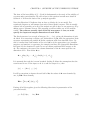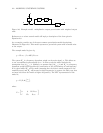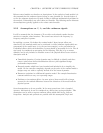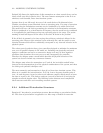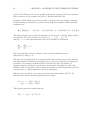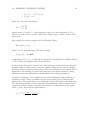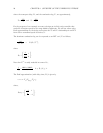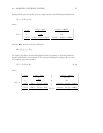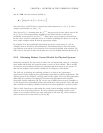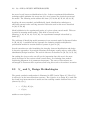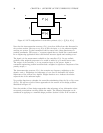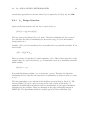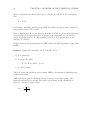28 CHAPTER 2. OVERVIEW OF THE UNDERLYING THEORY
and ∆ ∈ B∆, with the structure defined as,
∆ =
diag(δ
v
I
2
,∆
1
)
δ
v
∈R,∆
1
∈C
.
Note that this is an LFT with a repeated real-valued parameter, δ
v
(|δ
v
|≤1), and a
complex perturbation, ∆
1
(|∆
1
|≤1).
Note that as R⊂C, assuming that ∆ ∈C
n×n
, always covers the case where some of the
∆
i
(or δ
j
) are more appropriately modeled as real-valued. However this may be
potentially conservative as the ∆ ∈C
n×n
, allows many more systems in the model set.
In this case it would be somewhat better to consider combining the effects of δ
v
and ∆
1
into a single complex valued ∆ with an appropriate weight.
In principle, if we have additional information about the system (some δ
j
∈R,for
example) then we should use this information. Performing analyses with real valued
perturbations is currently at the forefront of the structured singular value research. We
will return to this issue in more detail when we cover the analysis methods (Section 2.4).
2.2.5 Obtaining Robust Control Models for Physical Systems
Obtaining a model of the above form is where the real engineering comes in. A designer
must model and identify the physical system to arrive at such a model. This is usually
an iterative process whereby designs are performed and then tested on the system. In
this way the designer often obtains a feeling for the adequacy of the model.
The best way of studying the modeling problem is to look at the documented
experiences of others applying these approaches; particularly in similar applications. The
citations given in the Section 2.1 will be useful in this regard. There are also approaches
addressing the problem of obtaining LFT models from descriptions with variable
state-space matrix coefficients [22, 23]. In the area of SISO process control, Laughlin et
al. [24] describe the relationship between uncertainties in time constant, delay, and gain,
and a suitable ∆ weighting. Models of this form are often applicable to process control.
There is little formal theory addressing the robust control modeling problem although
this is an area of increasing interest. A recent workshop proceedings volume on the
subject is an excellent reference for those interested in this area [25]. Other references
can be found in the review article by Gevers [26].



